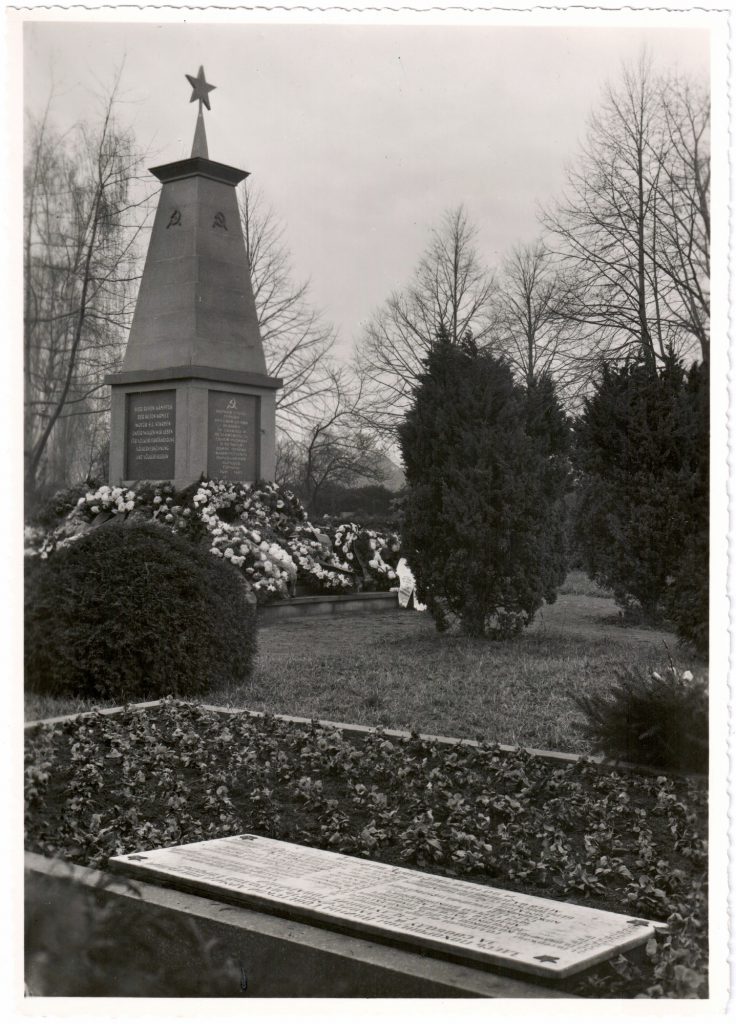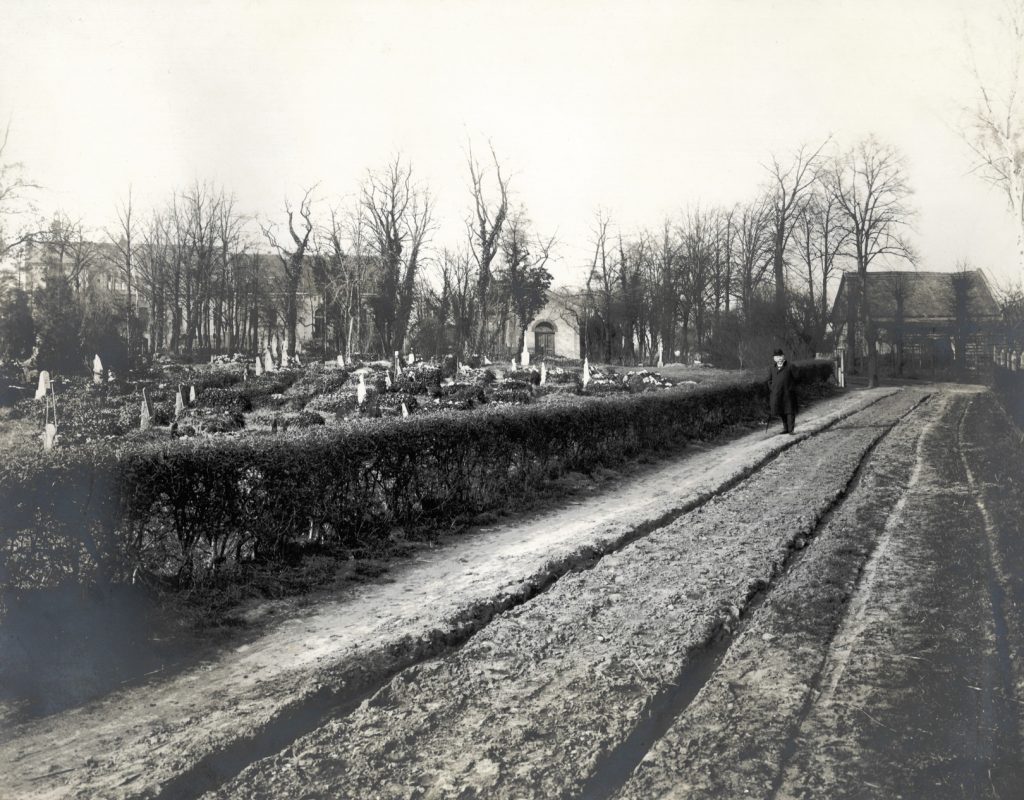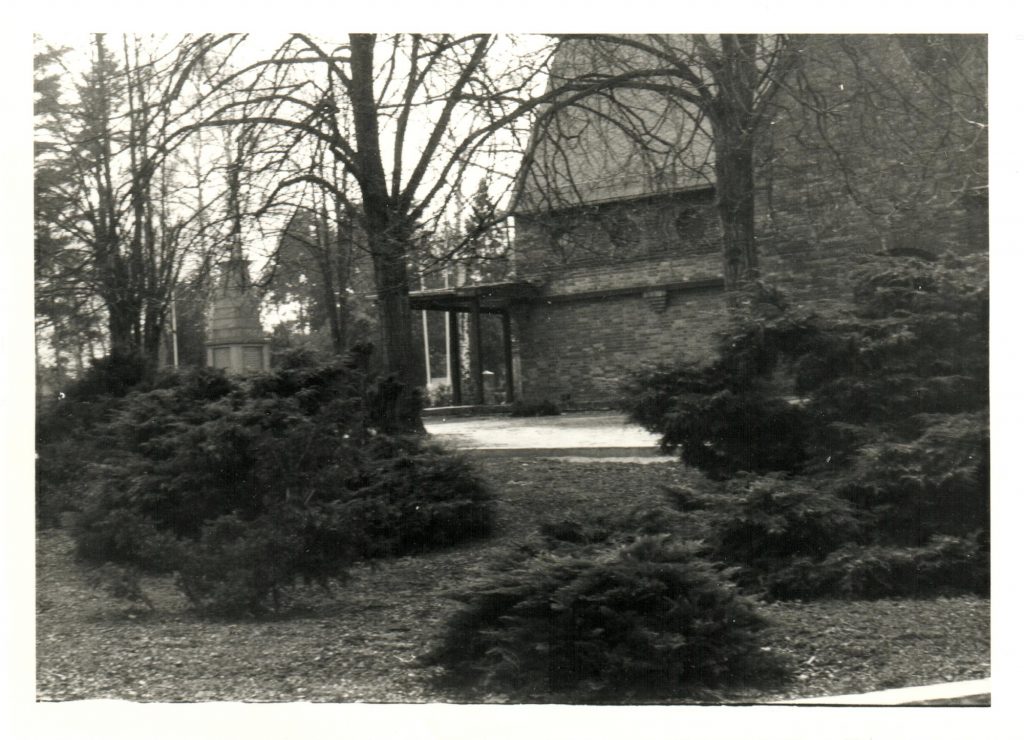[overview] [last station] [next station]
Not far from the old city centre, in continuation of the old Potsdamer Straße, the Weinbergsweg leads to the municipal cemetery, which has been used as a burial site for more than 200 years.
To the right of the entrance, as an attunement to the landscape behind the gate, a group of sculptures in half relief moves the visitor to pause and contemplate.
The Prussian Ministry of the Interior donated this cast concrete relief, designed by the sculptor Joachim Karsch. It is not self-explanatory, one tries to interpret the six persons in the half relief, looking from left to right and back again. Some are still, others are looking towards an apparition discovered overhead, perhaps a light. The originally legible inscription, now weathered, can be found inside the church. The cast concrete sculpture is of art-historical importance because it is one of Karsch’s few remaining works.
Upon entering the cemetery, a door to history opens. In 1804, the church elders, the magistrate and the citizenry of the town of Teltow had decided to build a new cemetery, which would also meet the royal Prussian requirements for hygiene and for locating burial grounds on the outskirts of settlements.
In the ensuing year, the cemetery on Weinbergsweg southwest of the town centre was rebuilt and consecrated. It replaced the old, closed churchyard around the St. Andreaskirche. The church still lay in ruins from the city fire of 1801, most gravestones damaged, and the cemetery ravaged by fire debris. It could not accommodate any new graves.
The area of the new cemetery, to this day separated from the Weinbergsweg by a stone wall, had been donated to the church by two Teltow farmer burghers (Ackerbürger). In return they were granted the privilege of planting and utilising green cuttings and hay between the graves.
The cemetery was expanded several times and also used municipal grounds. In 1867, a solid mortuary and ceremonial hall was built, today the office of the cemetery administration. In 1928, the church’s parish council (Gemeindekirchenrat) decided to build a new, representative chapel. The architect Winfried Wendland was commissioned with the structural and artistic directorship.

The construction was carried out exclusively by Teltow companies. The construction costs amounted to 26,700 RM. The clinker brick building was consecrated on 5 August 1934.
You walk towards the back of the chapel. The best route to the main entrance is to pass the building, which was renovated in 2015, on the left.


